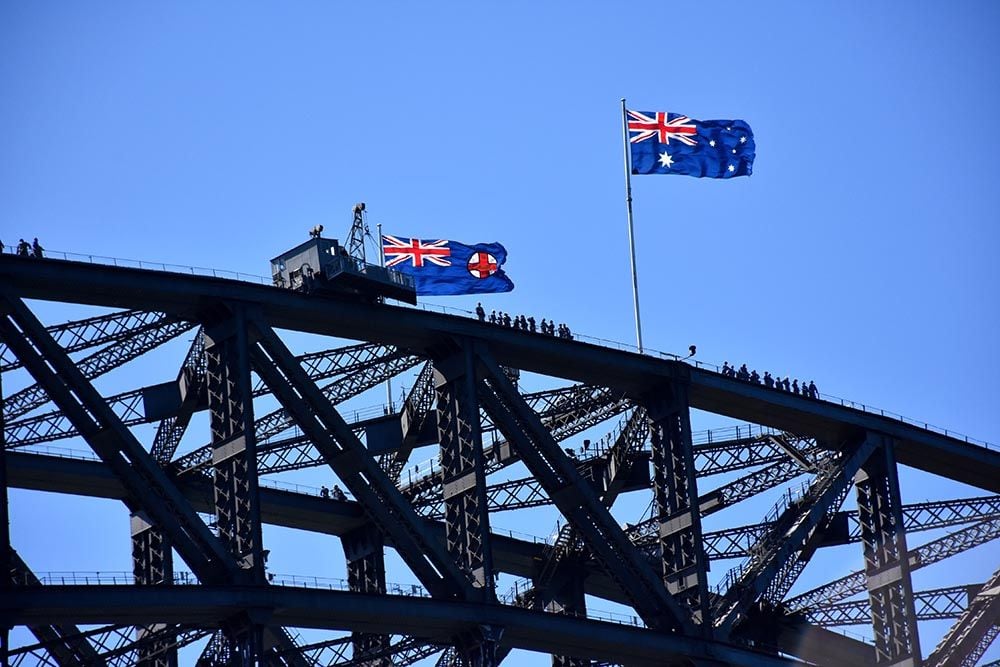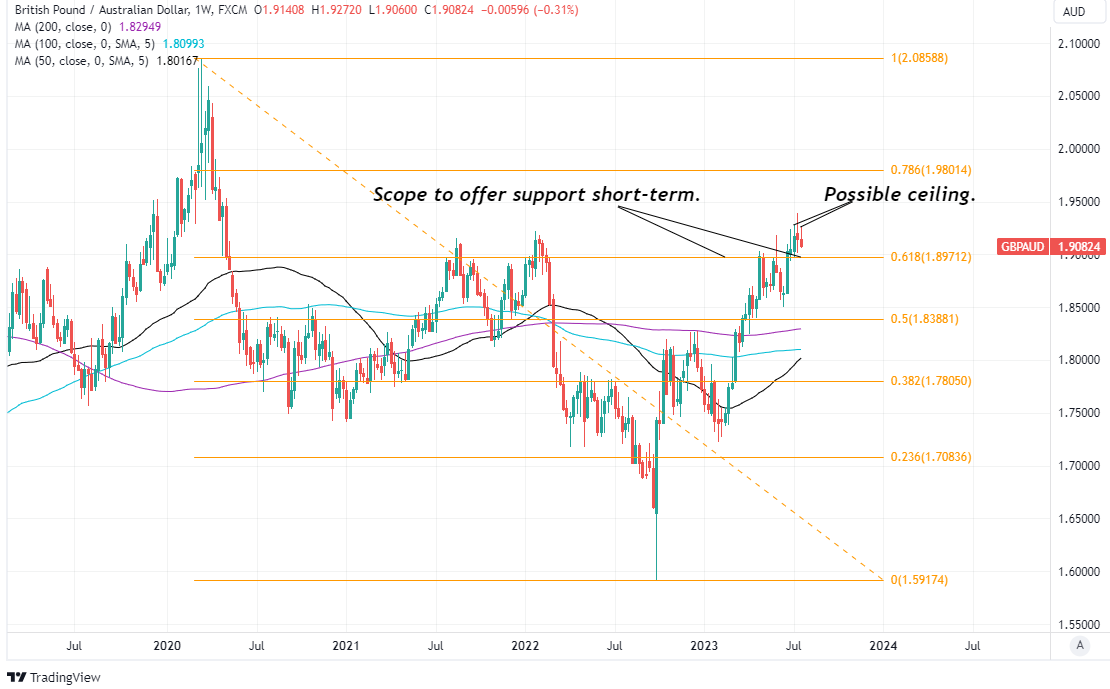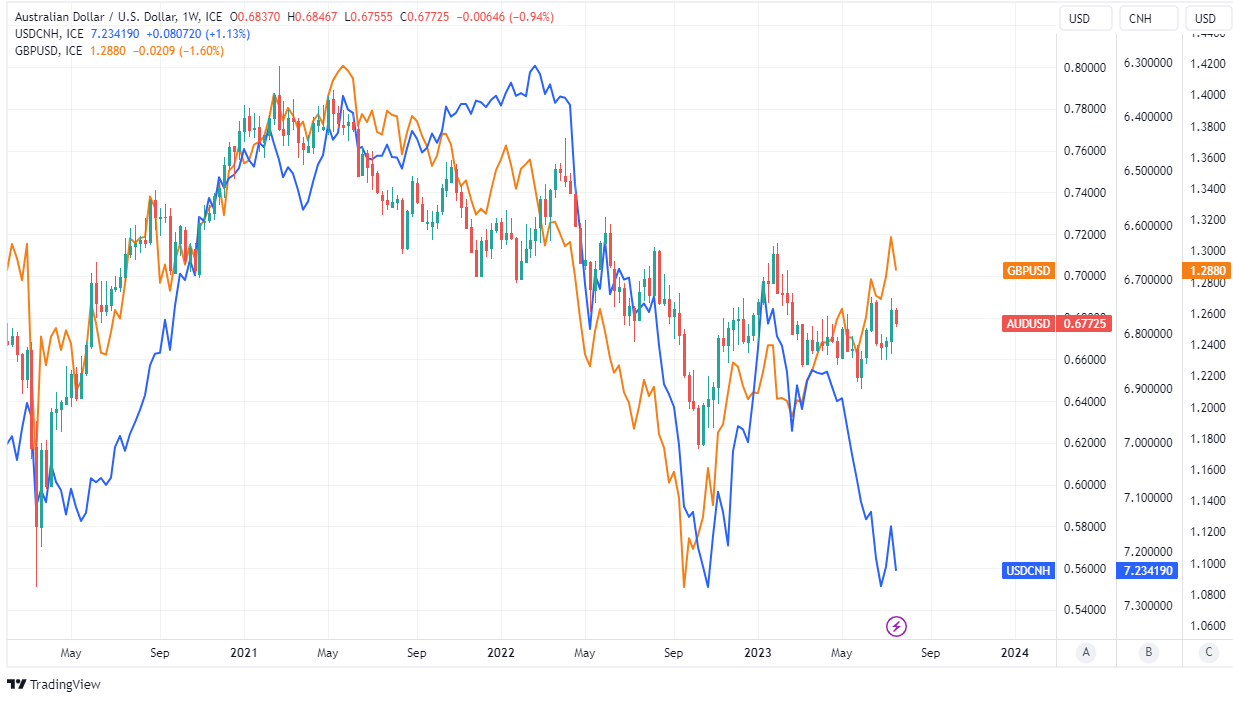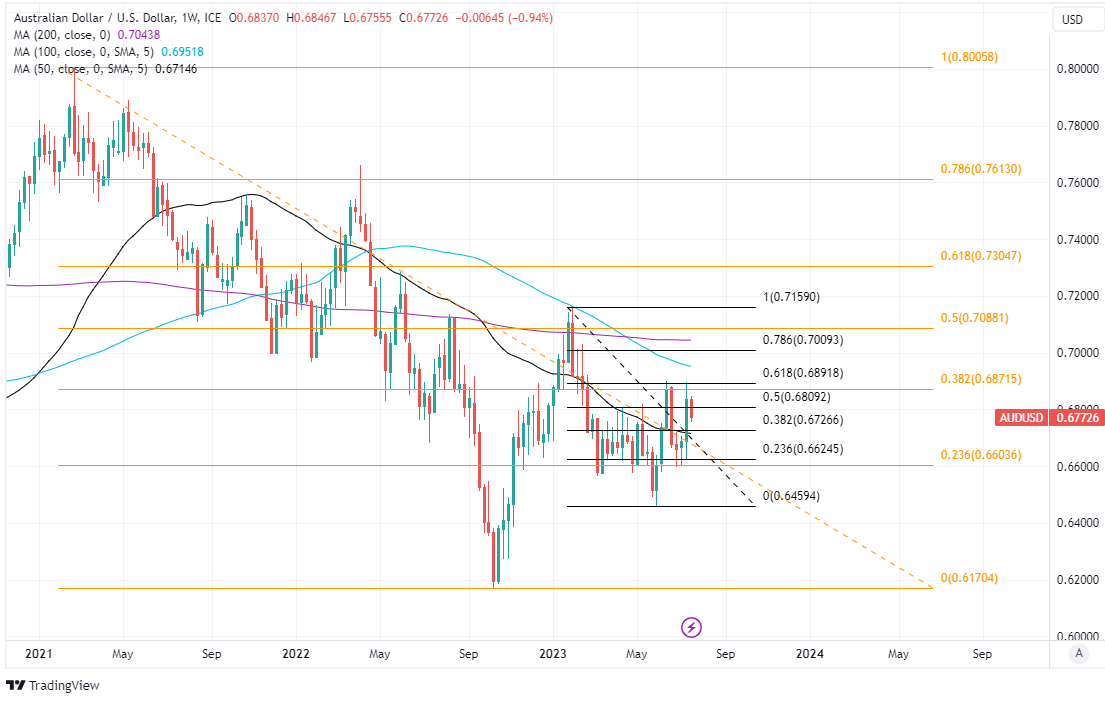GBP/AUD Rate's Rally Stymied by Twin Headwinds
- GBP/AUD stymied by twin technical & fundamental headwinds
- Attempted rallies could fade between 1.9250 & 1.93 short-term
- Potential scope for support at earlier resistance around 1.8970
- Australian jobs data & China stimulus plans could both weigh

Image © Adobe Stock
The Pound to Australian Dollar exchange rate wilted further from its highest since April 2020 in the opening half of the week but could find losses limited by an earlier technical resistance on the charts in the short-term even as twin fundamental and technical headwinds scupper any attempted reapproach of 1.93.
Australian Dollar exchange rates fell widely on Wednesday even as stock and bond markets built further on earlier rallies in many parts of the world but losses for the antipodean Dollar were not nearly broad as those seen by Sterling after UK inflation fell further the consensus among economists expected in June.
June's declines keep alive the prospect of inflation following the forecast path set out by the Bank of England (BoE) in May with possible implications for the interest rate outlook but June employment data from Australia and speculation about a stimulus announcement from China are just two reasons why GBP/AUD could yet edge lower still.
"As for the jobs data, employment changes have been volatile in recent months; Westpac looks for a more trend-like 25k in June, which should keep the unemployment rate at a low 3.6%," says Sean Callow, a Sydney-based FX strategist at Westpac.
"Last week's AUD/USD rally was its strongest of the year, albeit reliant on the downside surprise on US inflation," he adds.

Above: Pound to Australian Dollar rate shown at weekly intervals with Fibonacci retracements of 2020 downtrend indicating possible areas of technical resistance with one now turned support and selected moving averages indicating technical support and/or resistance.
Economist surveys suggest Thursday's employment data will show the Australian economy creating a more modest 15k number of jobs in June after a small April decline was reversed with an increase of 75.9k in May.
With April data aside, June's employment growth would be the slowest since January and potentially enough to sustain uncertainty about the Reserve Bank of Australia cash rate outlook ahead of the August 01 monetary policy decision.
Many local economists say the RBA has likely already raised its cash rate as far as it's likely to so the Australian Dollar implications of Thursday's data are as uncertain as the monetary policy outlook but the antipodean currency's correlation with the Renminbi suggests it might benefit if there is a large stimulus announced later this month.
"AUD followed CNH lower amid heightened concerns about China’s property sector and the lack of policy stimulus from the government," says Carol Kong, an economist at Commonwealth Bank of Australia, in reference to Wednesday's Australian Dollar losses.
"Markets are closely watching any stimulus announcements ahead of the Politburo’s semi‑annual economic conference in late July. Our base case remains for a modest economic stimulus package. As such, we expect Australian commodity prices to keep falling and weigh on AUD," he adds.

Above: AUD/USD shown at weekly intervals with upside down Dollar-Renminbi rate and GBP/USD.
Economist forecasts have overestimated Chinese economic data notably in recent months while the government has moderated its own expectations for the year and the Renminbi has weakened notably to become the third biggest faller in the G20 basket behind only the Russian Rouble and Turkish Lira.
Some measures of economic activity have surprised on the strong side of expectations, however, while persistent declines from U.S. inflation rates have recently revived analyst and economist hopes of a 'soft landing;' for the global economy even after the significant increases in interest rates over the last year.
Falling U.S. inflation and these 'soft landing' expectations have been a weight on U.S. Dollar exchange rates in recent trade but the Australian Dollar, leading the Australian Dollar to rally toward notable technical resistances on the charts and placing downward pressure on GBP/AUD.
"We still expect quarterly GDP growth to be flat over the next three quarters, with growth of just 0.5% over 2023 – the slowest pace of growth outside of the pandemic since the 1990s – and 0.9% in 2024. Both would be well below trend," says Alan Oster, group chief economist at NAB.
"The labour market is also expected to weaken through the second half, with the unemployment rate rising from the near 50-year low of 3.6%. The sharp slowing in growth will see unemployment reach 5% by the end of 2024. This is a significant turnaround from the outcomes seen over the past year or so," he adds.
 Above: AUD/USD shown at weekly intervals with Fibonacci retracements of 2021 and 2023 declines indicating possible areas of technical resistance.
Above: AUD/USD shown at weekly intervals with Fibonacci retracements of 2021 and 2023 declines indicating possible areas of technical resistance.
